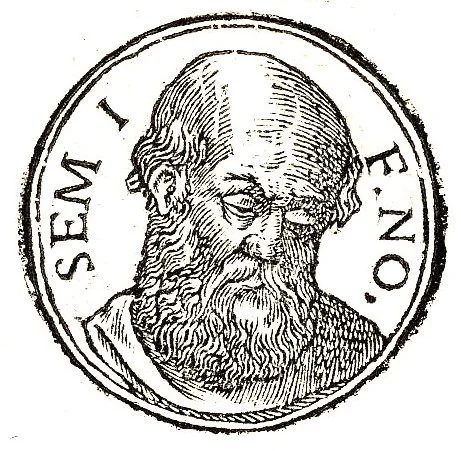Perhaps the most salient manner in which language will manifest in the JEM is in name meanings of fictional or parabolic characters. Indeed, if you remember one lesson in this study, remember that name meanings almost always hold the most important key to interpreting messaging within Jewish parable, whether in the contemporary or ancient context. This may come in the form of references to mythical or Biblical figures, to elements, plants or animals or it may even come in the form of references to important real life figures. Names are especially ethnic identifiers. Always carefully scrutinize the names in Jewish works.

From a communication perspective, meaningful names become a profoundly efficient and imitable way of transmitting information. To wit, if one knows the meaning and significance of the name then he knows the meaning of the character who bears the name. Suddenly the parable becomes relevant and coherent. Typically in JEM, the name tells us who is Aryan, who is Jewish and occasionally who is otherwise. From here, suddenly, we know what the given contest is “really about.” We also know who to root for. When that person wins, in the case of a coming AIM, we are made especially enthused or moralized by his or her success.
To be absolutely clear, this does not mean Jewish artists will give their Jewish characters stereotypically Jewish names and their Aryan characters stereotypically WASP or Aryan names, even if this does sometimes occur. We’ll remember this is esoteric moralization. Rather, again, the key is in name meanings. It is true, many Aryan storytellers will convey meaning through name, but none, at least in the current day, with the racial motive, knowledge of language, knowledge of mythology, cleverness, carefulness and fastidiousness of Jewish Esotericists. This is simply objective as this study makes clear. If this indicates “obsessiveness” on the part of Jews vis-à-vis Aryans, it is certainly to their credit and imitable.
Indeed, this study will be an important step in improving our artists in this direction. Here we will learn the meaning of the central symbols and Biblical or mythic personages that are referenced in JEM. For that which is not revealed here, a system and style of analysis will be developed so that it may be revealed. Hence works of JEM will become quickly identifiable and decodable. More, again, our artist and mythmakers will be able to deploy this knowledge in AIM. For example, through AIM, in an inversion of JEM, defeated villains may be esoterically indicated as Semitic, while victorious heroes and alpha-males as Aryans.
Here we should understand that Jewish esotericists rarely give names frivolously. Rather, as elsewhere, there is a great tendency to give every detail meaning, thereby thickening and layering works. This is imitable. An artist should never choose a name merely because of its “sound,” even if phonetics are an important, secondary, aesthetic consideration. He should choose a name first and foremost for its meaning. Likewise, in JEM, names are infrequently innocuous. In other words, they very often relate to ethnicity, racial competition and racial, sexual competition. This “pushiness,” especially, is imitable. Indeed, themes of ethnic struggle, frequently waged sexually, are almost always on the Jewish Esotericists mind. This “mischievousness” appears to be part of the imitable joy of Jewish mythmaking.
Yet, admirably, at least in the contemporary context, name meanings are generally morally neutral. In other words, with some notable exceptions, names infrequently characterize Jewish adversaries as simply “evil” or even “stupid” or “low,” nor Jewish protagonists as simply “good” or “brilliant.” Rather names tend to refer to a soberer sense of racial dynamics even if understood from a moralizing Jewish perspective that, for instance, overestimates the sexual charm of Jews.
Regardless, here we sense Jews with their “eyes open” and above the Manichean sense of morality they might promote externally or exoterically among Aryans. This “moral neutrality” remains true, whether or not a name relates a character, for example, to a Biblical prostitute such as Mary or Martha. That is because, here, ambivalence prevails. Indeed, while JEM acknowledges these figures as whores, with a hidden, greasy smile, they are also “Sacred Whores.” They are the foreign Aryan wombs of a Jewish continuance.
As with other symbols appearing in JEM, name meanings are often counterintuitive. Let’s use the name John, for example. The name John is a common name used to identify Jewish characters in JEM, while the name Jonathan is a common name used to refer to Aryan characters. To be clear, these names are etymologically distinct. Jonathan comes from the Hebrew name Yehonatan, יְהוֹנָתָן, and John comes from the Hebrew name יוֹחָנָן, Yochanan.

To the reader, this distribution of names in JEM seems counterintuitive. After all, in the real world, the name John is a common Aryan name, while much less common among Jews. Indeed, if a Jew is named by one of the names, he is far more commonly a Jonathan. This is because the name John is associated with John the Baptist who appears in the New Testament, while Jonathan is a figure appearing in the Hebrew Bible. Thus Aryans have been historically more apt to name their children after the former, while Jews after the latter.
The relevant thing here is the identity of those figures in the Biblical works. Here characters, like Saul’s son Jonathan, formerly assumed Jewish are esoterically understood as Aryan, as we shall explicate. On the other hand, as we will explore, John the Baptist is indicated a Jew.
As it concerns “naming practice,” there are some imitable tricks in JEM for the deployment of AIM. For example, a ubiquitous and obvious trick of Jewish Esotericists is to use a form of a name to convey the same meaning of the name.
Thus forms of John, for instance, such as Ian, Sean, Ivan or Hank, and even feminine forms, such as Janet, Jane or Jean, will be used in JEM to name Jewish figures. Here the Jewish Esotericist disguises an esoteric pattern while giving greater variance to his “palate of names.”
Context will also become important in evaluating names in JEM. For instance, a character may have a pseudonym and a hidden identity. In these cases the pseudonym may carry an Aryan meaning and the hidden identity a Jewish meaning, conveying the idea that a Jew is posing as an Aryan.
In some cases, first names or middle names or nicknames will operate as “modifiers” of surnames, which understood in combination, elucidate actual intended meaning. For example, the character Lenny Weinrib appearing in the Woody Allen film Mighty Aphrodite will adopt the absurd pseudonym “Gildersleeve” when going to meet the prostitute Linda Ash.

The Jewish name Weinrib means “vine.” Gildersleeve is an English nickname for a flamboyantly dressed man meaning “golden sleeve.” Hence Weinrib, or vine, is given a golden sleeve. This is a reference to the Bacchanal Golden Vine reported by Tacitus and Julius Florus as other contextual clues in the film will reveal. Allen is indicating the character a “Symbolic Synonym” or avatar of the Semitic Bacchus.
Sometimes names will serve as “clarifiers,” clarifying the meaning of other names they appear in combination with. For example, a “clarifier” may appear in combination with a name that has multiple possible meanings to clarify its meaning. Consider the comic book character Franklin “Foggy” Nelson for example. The last name Nelson means son of Neil which translates as either “champion” or “cloud.” The nickname “Foggy” tells us that his name and his identity is a reference to clouds. This is the case as we shall have an opportunity to explicate.

Franklin “Foggy” Nelson name contains a double reference to clouds, which in turn is a reference to the Jewish God. The Jewish God appears as a cloud in both the Old and New Testament.
In most cases, the meanings of names derive from name meanings. However, in some cases a name is homograph for a word, that has a distinct meaning, and the name takes its meaning from the word. The name Ted for instance might be a reference to the word ted, meaning: “to spread out for drying, as newly mown hay” or the name Bill may be a reference to the word bill meaning: “a medieval shafted weapon having at its head a hooklike cutting blade with a beak at the back.” In JEM, the latter may have phallic significance.
Particularly in the case of comic books, nicknames or diminutives often contain the most important clue to ethnic identity. Though perhaps less frequently they represent efforts at obfuscation. Often, they contradict meanings found in given names thereby adding a layer of concealment where a more careful examination is require to determine ethnicity. Hence additional contextual clues become important for verifying identities.
For instance, the figure of Antman, designed by Stan Lee specifically as a WASP presenting Crypo-Jew, as this study reveals, goes by the name Jonathan Henry “Hank” Pym. Jonathan, as described, is an Aryan name in the JEM. Henry in this context serves as the supposed origin of Hank which may be a diminutive of Henry.
Yet Hank was originally a short form of Hankin which was a medieval diminutive of John, a Jewish identifier in the JEM. Here the name Jonathan appears to function as a clue, indicating Hank as a form of John. However, the name Pym is the clincher. It is a reference to the Hebrew word Pim, פימ, Pym or “Pim Weight.”
The Pim, mentioned in the Bible, is a small, polished stone that functioned as an ancient monetary unit. Here is serves both as a charactonym for Ant-man, who may become miniature in size and as an ethnic identifier. The reference here is to the stone, a common Jewish identifier. Here the symbol of the stone is given an especially monetary sense.

In some cases, too, a name will carry two possible meanings, one that could refer to an Aryan and one could refer to a Jew in the symbolism of JEM. Take the surname of the superhero Hawkeye, Clint Barton, who, as this study reveals, is intended a Jew. The surname Barton may derive from bere or bær meaning ‘barley’ and tun meaning “enclosure” or “settlement.” This would indicate him an Aryan as we will learn.
However the same surname also derives from Germany and central Europe where it is derived from a pet form of the personal name Bartolomaeus or Bartholomew. This is a reference to the Biblical figure Nathanael and would suggest Hawkeye a Jew, as we will explicate. Often these names with two possible meanings, one indicating a Jew, the other indicating an Aryan, indicate a Jew and, often, in particular, an “Aryan-presenting Jew.” Though, as always, all available nomenclature or narrative clues must be considered.
There does appear an occasional instinct here in naming, as with other symbol use, to impress other knowledgeable esotericists by adding additional levels of obfuscation. Yet there also seems a pride in creating solvable puzzles. This is imitable. Otherwise parables become meaningless.
In other cases, if less frequently, both Aryan and Jewish names will be present in the same character. For example, a first name will identify them as Jewish, while a last name Aryan. This appears to occur more commonly with female characters. Here an Aryan father is indicated. Here an Aryan genetic recessiveness, of which Jewish esotericists are acutely aware, is assumed. The character is indicated as Jewish, although with an Aryan parent.
We find this with the crypto-Jewish character of the Wasp who is named Janet van Dyne as well as with the Spiderman love interest Mary Jane Watson, also a Jewess. With other female characters, the surname will be a Jewish identifier while the first name an Aryan identifier. Here we should note, many Biblical female names, with some important exceptions, esoterically indicate Aryans. Indeed, the Jewishness of females is, in the JEM, a slipperier thing, as this study shall discuss.

Names are typically chosen carefully, for meaning. Less frequently are names chosen because they merely “sound like” or resemble another name or word that is meaningful. They are almost never chosen, in the manner Aryan artists frequently choose them, because they sound “cool.” Rather this is how blacks choose the names for their babies.
In some cases, though less frequently, Jewish esotericists will reference non-Mythical, non-Biblical, real historical figures with their name choices. Here meaning is derived from the significance of that figure from a Jewish perspective. Stan Lee, one of the artists the broader study covers in depth, certainly shows this tendency especially with his work on the Spiderman parables. Hence it’s worth discussing.
Indeed, historical figures are one place to look when one is evaluating a name in JEM and the name meaning seem innocuous, bland, obscure, uncertain or unknown. The meaning of the name may come from the historical person it references whom —even if grown obscure— is historically significant whether as an advocate, or more likely, adversary of Jews.
When JEM references real historical persons, typically references in JEM tend to be toward significant, definitive types, rather than relatively less important, less distinct or more obscure figures. Here the goal is personifying not necessarily persons per se but important phenomena that they represent.
These phenomena are thereby transmuted into representative archetypes. Hence for example, if a Jewish esotericist is interested in referencing the phenomena of genetics so as to demonize it in a poorly behaving person or villain, he may sneak in references to Gregor Mendel, the founder of the modern science of genetics, rather than some contemporary leader in the field who hasn’t made contributions of comparable historical or lasting significance.
This “definitiveness” helps make characters, who are inspired and modeled to some degree on these figures, themselves more distinct and meaningful. It makes them archetypal. This underlying character richness assists the power, sense of mystery and abidance of the art.
It also greatly aids the artist whose task becomes not in inventing characters whole cloth but encoding historical characters in metaphor. Yet, of course, in JEM and REM, this is the value in all references made in names, one may make their characters disguised Gods or prophets, and through their travails describe the triumph of their race. That is really all there is to it.
The salience of the referenced historical figure also makes messaging more transmittable, both to conscious and unconscious audience members, whereas, again, if messaging is too obscure, transmissibility suffers. Likewise, it serves the functioning of teaching “history” to those who can consciously read it and from an ethnic perspective.
Thus, for this reason, every artist should have a powerful grasp of important trends in history, particularly intellectual history. In Stan Lee’s work, interestingly, historical references are attached to Aryan figures and not Jewish figures. This suggests a collective Jewish outlook that considers Jews of the Jewish God, monolithic and immutable, while Aryan’s individuated.
As of yet, I’ve yet to encounter any clear anagram use or any similar primitive ruse, at least that I am aware of. Rather Jewish esotericists seem to take pride in the careful and deceptive use of words and names, setting this as an unspoken rule for themselves. Here as well, they set as a requirement for the reader or viewer, knowledge of figures they reference, whether Biblical, literary, historical or Mythical. Here doubtlessly there is a delight in the apparent inattentiveness, obliviousness and simple ignorance of the Aryan or non-Jewish audience.
The use of ruses like anagrams would seem to represent a desperate stage for JEM and I would discourage such nonsense with Aryans artists. It seems things would rapidly become incoherent and REM would begin to lose its power. Though it does seem like a tactic Jews will now have to consider.
Lastly, these considerations are not limited to personal names. Place names, the proper names of plot-important-items, phenomena or names in general are often meaning-rich. This may entail the inventing of names for, say, a city or using an existing city name because of the meaning of the name rather than some other known cultural significance of the city.
We will see Biblical examples, as this book discusses. For example, the city of Bethany in the New Testament. Bethany most likely means “House of Figs” and is almost certainly, I will argue, intended as synonym for a brothel. Whether a town named Bethany actually existed during Christ’s time or even when the Gospels were composed is itself meaningless. Here a Jewish esotericists may have as easily used the name of an existing town, because of its meaning, or he may have invented a town. Either possibility would have served the higher purpose of parable creation.
Read more here: Names Part II: The Importance of Names in REM, Common names & Exoteric Alibis
Can you elaborate on why Jon, (Yehonatan from the book of Samuel) is an esoteric “Aryan?”
Is it enough to be a first born, strong, warrior type?
Ostensibly Esau earns his “Gentile” designation in a similar way, I’m just wondering where you personally draw the line.
LikeLike
Jonathan is the Aryan son of Saul of the tribe of Benjamin. He’s the heir-to-be that’s cucked out of his birth right by the Jewish David. His name reoccurs in JEM as an Aryan identifier. I elaborate on this in my writings which will be published here, in the book, or in both places.
LikeLike